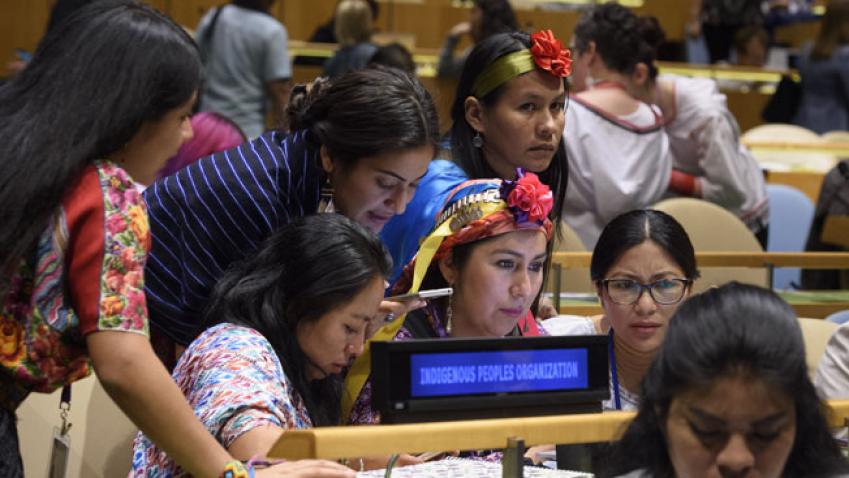“The health of our languages is connected to the health of the earth […] We lose our connection and our ancient ways of knowing of the earth when our languages fall silent. […] for the sake of future generations, we must ensure they too can speak the language of our ancestors.”
On 1 February 2019, when the International Year of Indigenous Languages officially launched at the UN Headquarters in New York, Kanen’tó:kon Hemlock, Bear Clan Chief of the Mohawk Nation, in a moving speech, explained why indigenous languages matter. On 9 August, indigenous languages will once again hit the spotlight as the main theme of the International Day of the World’s Indigenous Peoples.
Of the approximately 7,000 languages spoken worldwide, 5,000 are estimated to be indigenous languages. With fewer and fewer speakers actively using them, around half of these languages are in danger of falling silent forever.
Indigenous languages are extensive and complex systems of knowledge, including knowledge of our environment. Protecting languages means protecting biodiversity, cultures and livelihoods. But despite their immeasurable value, many languages are disappearing at alarming rates due to forced relocation of indigenous communities, disadvantages in education, illiteracy, and poverty affecting indigenous peoples.
This year’s International Day of the World’s Indigenous Peoples will showcase not only challenges, but also opportunities and innovative solutions for preserving and developing these unique tongues. It will highlight the fundamental importance of implementing the UN Declaration on the Rights of Indigenous Peoples to save and strengthen indigenous languages, traditions, cultures and communities.
The main celebrations of the International Day will take place on Friday, 9 August from 10.00 am to 5.00 pm in the ECOSOC Chamber at United Nations Headquarters in New York. Indigenous experts and guest speakers will discuss the role of indigenous language and present creative initiatives for their promotion, preservation, and revitalization. The event will be broadcast live on UN Web TV.
Meanwhile, at the main lobby of the UN Headquarters, an innovation hub will open its doors to showcase some of the most innovative approaches that promote the knowledge and use of indigenous languages. The interactive exhibit will feature games, apps, interactive maps, videos and more 21st century tools for preserving centuries-old languages.
About UN DESA
UN DESA Products
UN DESA Divisions
- Office of Intergovernmental Support and Coordination for Sustainable Development
- Division for Sustainable Development Goals
- Population Division
- Division for Public Institutions and Digital Government
- Financing for Sustainable Development Office
- Division for Inclusive Social Development
- Statistics Division
- Economic Analysis and Policy Division
- United Nations Forum on Forests
- Capacity Development Programme Management Office

